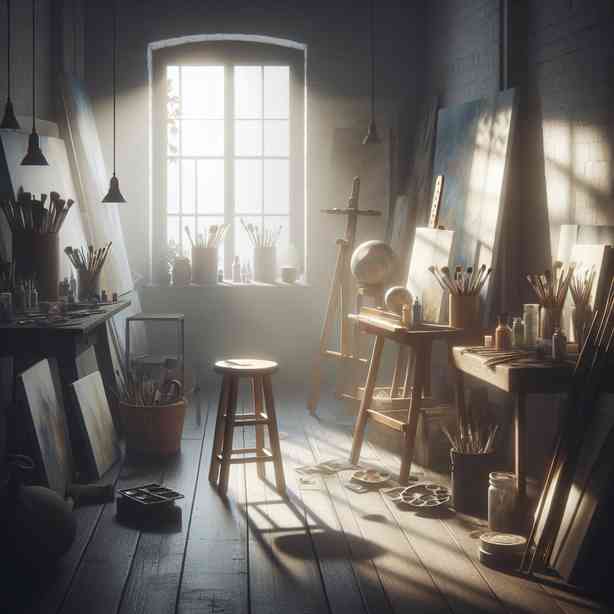
When Silence Fills the Studio
The studio is often regarded as a sacred space where creativity flows, ideas flourish, and artistic expression comes to life. However, every artist, musician, or creative individual knows that silence can be an equally powerful presence. The absence of sound can evoke a range of emotions and lead to profound insights. This phenomenon of silence in creative workspaces opens up a unique conversation about its significance, how it can enhance productivity, and the ways it can inspire creativity.
To begin with, silence serves as a canvas upon which thoughts can be painted. In a world filled with constant noise, whether it be from technology, people, or our own bustling thoughts, finding a moment of stillness can be invaluable. This quiet allows individuals to delve deeper into their thoughts and feelings, providing the mental space necessary to explore new ideas. Many artists and musicians often describe their most significant breakthroughs as occurring in moments of solitude, away from distractions. These silent moments can lead to a clarity of vision that is often obscured in noisy environments.
Furthermore, the act of listening, which is perhaps these days an underappreciated skill, gains importance in the context of silence. When silence fills a studio, it invites individuals to listen—not only to their internal thoughts but also to the subtle sounds and sensations that often go unnoticed. In music, this can mean attuning oneself to the nuances of rhythm and melody that emerge in the quiet. In visual arts, it could translate to noticing how light interacts with various surfaces in the absence of competing sounds. Thus, silence can be seen as a catalyst for heightened awareness.
Another essential aspect of silence in the studio is its role in fostering mindfulness. Creativity often flourishes in a state of mindfulness, where one is fully present in the moment. Silence facilitates this presence by eliminating distractions, allowing creators to immerse themselves in their work. This practice of mindfulness can reduce anxiety and stress, which are common obstacles faced by artists. Thus, embracing silence can be a therapeutic endeavor, providing a refuge from the pressures of creative expectations and deadlines.
Moreover, silence can stimulate collaboration among artists. In collaborative settings, a moment of silence can encourage participants to reflect and consider their contributions deeply before speaking. This pause often leads to more thoughtful discourse and innovative ideas. It can also facilitate a sense of shared understanding, as individuals take the time to absorb what others have said, building on those thoughts effectively. In this way, silence acts as a bridge, allowing for deeper connections and a more profound shared creative experience.
However, embracing silence can also trigger discomfort. Many people feel unease in silence, often filling the void with unnecessary chatter or distractions. This discomfort stems from societal norms that equate silence with awkwardness. Yet, understanding that silence can be a powerful tool in the creative process is crucial. It can be beneficial for creatives to practice becoming comfortable in the quiet, allowing the silence to take its place as a valuable ally rather than an adversary. This learning process requires patience and a willingness to explore the depths of one’s own thoughts without the crutch of sound.
While silence is often appreciated during individual creative pursuits, it has an equally important role in performances. In music, the use of silence can create tension and anticipation, enhancing the emotional impact of a piece. Composers like John Cage have famously demonstrated the power of silence in music, encouraging listeners to embrace the spaces between notes. Similarly, in visual arts, the use of negative space in a composition can draw attention to the subject matter, allowing viewers to engage more thoughtfully with the artwork. Hence, recognizing and utilizing silence in performance contexts can elevate artistic expression to another level.
Beyond traditional art forms, the silence in studio environments also resonates with those in other creative industries, such as writing and filmmaking. Writers often seek silence to enter a “flow” state, where words pour onto the page without interference. The same applies to filmmakers, who may find that the absence of sound allows them to better conceptualize their scenes and dialogue. In these instances, silence becomes a backdrop for creation, allowing stories to unfold in a more profound way.
As we explore these concepts, it is essential to acknowledge the cyclical nature of creativity, where periods of silence are often followed by exhilarating bursts of productivity. Creative energy can ebb and flow, with silence marking a necessary pause that allows for reflection and rejuvenation. It’s the quiet moments that often lead artists back to their canvases, instruments, or scripts with renewed vigor and inspiration, ready to translate the insights gained during silence into tangible forms.
Silence is a resource that can replenish creativity, offering rest in a demanding artistic landscape. Many creatives report that moments of solitude—whether in nature, their homes, or within a studio—have provided them with the insights and imagination needed to push their work forward. This regeneration through silence can serve as a powerful reminder that creativity is not only about constant production but also about the times we take to step back and listen.
In conclusion, silence fills the studio in much more than a superficial manner. It is an essential element that complements creative practice, fostering innovation, clarity, and mindfulness. Acknowledging the power of silence can help artists, musicians, and writers cultivate deeper relationships with their work, others in their field, and themselves. It invites an exploration of the unseen and often unheard nuances of creativity. By embracing silence, the studio transforms from a mere workspace into a nurturing environment where true creativity can thrive. Through silence, we can discover new dimensions in our artistic journeys, learning to appreciate the music of our thoughts and the beauty of ideas yet unspoken.


